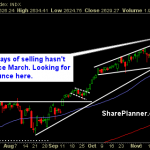Look around and you will find semiconductors everywhere.
The Semiconductor industry serves as a driver, enabler and indicator of technological progress. Developments in the industry determine the way we work, travel, communicate, entertain ourselves and respond to our environment. From the PCs we work on, the cars we drive, the phones we use, the electronic gadgets on which we watch movies, listen to music or play games, to the planes and weaponry used for transportation and protection, use semiconductor devices.
And it seems almost paradoxical that semiconductors have dragged the broader technology sector for the good part of this year.
When the economy is improving, people tend to buy more electronics.
According to Canadian Business, historically, the sector’s earnings growth has run at double the rate of gross domestic product (GDP) growth. However, the picture changes completely when the economy contracts or grows slowly.
Present Scenario of the Semiconductor Industry
According to Gartner Inc., worldwide semiconductor revenues in 2015 are predicted to decline 0.8% to $337.8 billion from 2014. This marks a major revenue decline since 2012 when the market shrank 2.6%. Previously, Gartner predicted 2.2% growth.
The U.S. economy faces several headwinds at the domestic as well as global level. On the domestic front, real GDP adjusted for price changes, slowed to an annual rate of 1.5% in the third quarter of 2015, down from 3.9% growth recorded in the previous quarter.
Also, the Oct 28 release of the U.S. Federal Reserve reaffirmed the interest rate at 0–0.25%, though it acknowledged the increasing economic activity in the country. However, uncertainty regarding the December rate hike decision continues to weigh on the overall market sentiment.
Global economic headwinds, like the slowing Chinese economy and the strong dollar, are increasing the cost of electronic equipment in regions like Western Europe and Japan. This, in turn, is lowering sales while encouraging buyers to shift to low-cost equipment in these markets. The added fear that PC sales have slowed didn’t help either.













Leave A Comment